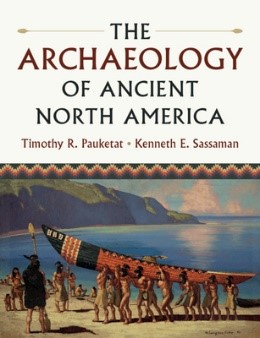 Left to right: artist’s rendition of Cahokia (Illinois) at height of its history, ca. A.D. 1200; aerial view of Pueblo Bonito in Chaco Canyon (New Mexico), a ritual center of the Ancestral Pueblo during the 12th century A.D.; artist’s rendition of an Iroquois longhouse, ca. A.D. 1600, New York; aerial view of Serpent Mound in Ohio, built ca. 200 B.C.
Left to right: artist’s rendition of Cahokia (Illinois) at height of its history, ca. A.D. 1200; aerial view of Pueblo Bonito in Chaco Canyon (New Mexico), a ritual center of the Ancestral Pueblo during the 12th century A.D.; artist’s rendition of an Iroquois longhouse, ca. A.D. 1600, New York; aerial view of Serpent Mound in Ohio, built ca. 200 B.C.
ANT 3153 North American Archaeology
Dr. Sassaman
ANT 3153 is an interpretive survey of the ancient history of North America and archaeological approaches to its investigation. The geographical breadth of the course is immense and you will have the opportunity to learn something about the pre-Columbian past of every region of the continent. Equally immense is the cultural, social, and ecological diversity of the continent’s regional archaeologies. A framing theme of this course is the observation that all inhabitants of North America, modern and ancient, were immigrants. American Indians, Amerindians, Native North Americans, and First Nations people have the deepest histories of immigration, but ultimately they originated from continents of the eastern hemisphere (primarily eastern Asia), and before then Africa, the cradle of humanity. More recent immigrants from Europe, Africa, Asia, or South America (who also trace root ancestry to Africa) mark the convergence of histories separated by millennia of human experience. Modern people tend to think of the “contact” between Europeans and Native Americans as a unique and transformative process, but in this course we will explore the effects of intercultural contacts long before modern times, those shaping the cultural disposition of peoples as diverse as ancestral Pueblos of the Southwest, Paleoeskimos of the Arctic, and the forebears of moundbuilders of the Eastern Woodlands. Textbook provided free of charge. Three objective tests, two small projects. GE-H.
